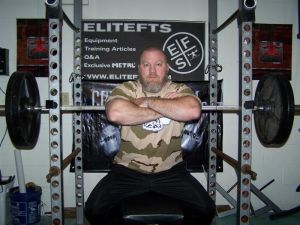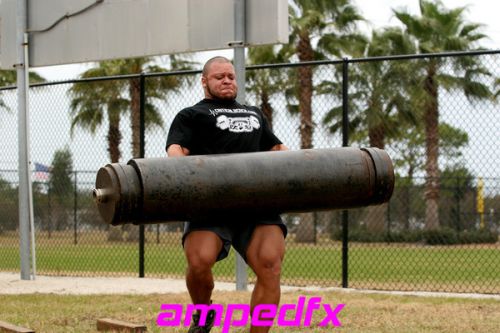For a lot of guys at the gym, the weight belt is a necessary piece of equipment—you hardly ever see them without it. Other guys though, never wear a weight belt. And like everything else, you always find some guys whose feelings are somewhere in the middle. Sometimes you'll see them wearing a belt but other times you won't.
There is actually a fair amount of controversy surrounding the regular use of weight lifting belts. And of course there are strong opinions on both sides. Years ago, about the only guys you would see wearing a belt were competitive weightlifters like the ones that compete in the Olympics. Gradually, you started see them being used in some of the more well-known muscle gyms and from there, the trend just sort of took off.
Most guys today use a belt because they saw someone else wearing one or read about them in a magazine article. Few however, really understand the pros and cons of using one during weight training. Given the fact that certain injuries can have a lasting impact and even be quite debilitating, it's important to understand both sides, so let's take a look.
 On the pro belt side you have the people who say that belts help prevent injuries to the lower back when lifting weights. Specifically, they say that belts reduce stress on the lower back while the person is lifting in an upright position and prevent hyperextension during overhead lifts. Those in favor of belts feel that they reduce lower back stress by providing compression for the abdominal cavity, thereby providing more support on the front side of the bones in the lower back.
On the pro belt side you have the people who say that belts help prevent injuries to the lower back when lifting weights. Specifically, they say that belts reduce stress on the lower back while the person is lifting in an upright position and prevent hyperextension during overhead lifts. Those in favor of belts feel that they reduce lower back stress by providing compression for the abdominal cavity, thereby providing more support on the front side of the bones in the lower back.
In providing this support, they say that the belt allows the spinal erector muscles to produce less force during the lift than they would without the belt, reducing the risk of injury. Similarly, the pro-belt side says that weight lifting belts prevent hyperextension of the back by forming a wall around the lower torso, which limits movement of the back. This also minimizes movement from side to side. In addition, some people feel that wearing a belt causes the lifter to be more aware of this position of his back, helping him to know when his posture is correct.
So there you have a brief overview of the general reasons that guys wear a belt when lifting weights. Now let's take a look at the other side of the fence. There is actually more information against regular use of a weight lifting belt than you'll find in favor of them. One of the biggest arguments against general belt use is that they give the user a false sense of security, causing them to take more risks and overestimate their weightlifting abilities.
That's kind of like someone who drives like a maniac just because he's wearing a seat belt and is therefore 'safe' should he get into an accident. The truth is that most people don't really understand the real purpose of a belt and how to properly use one. In a lot of cases, guys wearing belts feel that wearing one allows them to lift way more weight than they would be able to lift otherwise. And thanks to the belt, they don't feel any pain—at least for a while. But when the pain does come, it arrives with a vengeance because the injury is severe.
Numerous experts—including the world-renowned Mayo Clinic—advise against using a weight lifting belt except in certain circumstances such as when you have a pre-existing injury. Here's why they say not to wear a belt: 1) if you do not have a pre-existing back injury, a belt does nothing to increase your safety level; 2) an injury that occurs while wearing a belt is typically far more severe than it would otherwise be; and 3) when using a weight belt 'properly,' your technique suffers.
Unless you already have a back injury, all of the benefits you want to achieve by wearing a belt can be realized by strengthening your core. For the average bodybuilder or weightlifter, developing a solid, strong core provides the same safety benefits as wearing a belt, but without the increased risk of injury. Not wearing a belt helps you keep you focused on using proper form and also helps to reduce the tendency to lift more weight than what you should be lifting. Interestingly, a study of 50 male weightlifters conducted at the Albany Medical Center (Albany, New York) found that that the guys who did not use a belt had more abdominal and back strength than the bodybuilders who did use weight belts.
There are however, certain times when I recommend use of a weightlifting belt. First, if you have a pre-existing back injury, then consult with a medical professional and use a belt to help prevent further injury. I also like to wear a belt when powerlifting and performing four or more reps with heavy weight. When powerlifting, the belt helps you when you hold your air and it gives you something to push against.
More Information About Muscle Building Click Here
Source 4 Foods Never To Eat


No comments:
Post a Comment